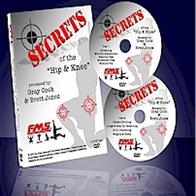Archive for July, 2012
Where to get 20,000 Calories for $20.00
Ho ho ho a weeks worth of calories for a 230 lb lifter for $20.00 I hear you shun.
Well as of this week I am doing it. For twenty bucks I can get 2 litres of Virgin Olive Oil and 10 lbs of spuds.
Haaa – body building just got cheap.
Throw in some meat, eggs, fish, veges & fruit and that’s it – CHEAP HUMONGOUS FOOD !!!

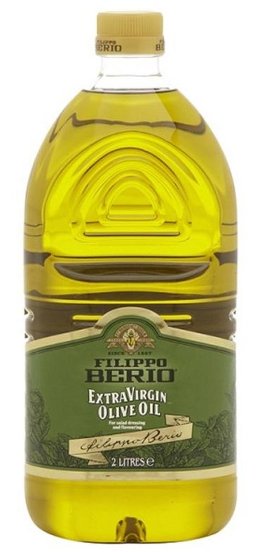
Warrior + Paleo +Anabolic Diets
For many years I was around 13 – 14 stone. Muscular, young and with an excellent blood profile for all markers. I never have even seen let alone used steroids.
When I was a teen I was anorexic and a drug addict. I was 6 stone at 16 and nearly died. Body building saved my life. I doubled my weight in six months from 6 to 12 stone. This was a phenomenal ego boost.
Any way when I was about 27 I was introduced to a high starch diet. Again a massive gain in muscle occurred.
After years of struggling to gain weight my muscle exploded & I got up to 220 lbs pretty easy. But as you should know a high carb diet also packs on more fat. For the first time in my life , while I was muscular and athletic, fat actually became a health concern.

At 44 & 230 lbs 20% body fat it still is today so a few weeks back I decided to try Paleo Diet. I have been on Warrior diet for quite some time & that diet has helped keep my belly fat at bay some what. My hope was that Paleo could take me down to 10% body fat and maintain my muscle mass – or even increase it.
I have done Paleo for 3 weeks now so I can fill you in.
PRO: If you want to weigh around 180 lbs give or take 20 lbs then Paleo will work for you.
CON: If you want to be big and muscular Paleo wont work – its too hard to get the required energy intake to be say 220 or more lbs.
PRO: It is great being on a healthier nutrient profile
CON: I have felt very low in energy during many workouts
PRO: I lost gut fat fast
CON: I lost muscle size too (was it visceral fat ? – I don’t think so)
My verdict on Paleo – I will continue to shun dairy and grains – but apart from that this diet is for skinny men – not me.
OK so I will keep the aspects of Paleo I know are good. No dairy (except for whey, casein, colostrum) & no grains.
My experiment has led me to “The Anabolic Diet” which I read about before but never tried. You can do this diet while sticking to most of the Warrior & Paleo principles. Just that on Anabolic you add more fat during the week & you carb load on the weekend.
I am just starting Anabolic Diet – I know it has similarities to the Ketogenic Diet & BodyOpus Diet
Ok so I know already I am gunna end up with a Hybrid diet that suits me. I will keep you informed of the results.
Books you want…

Warrior Diet
Anti-Estrogenic Diet
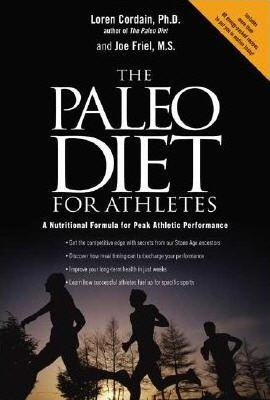
Paleo Diet
Primal Blueprint
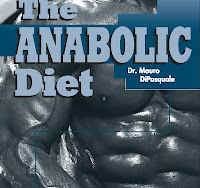
Anabolic Diet
Ketogenic Diet
Body Opus

OK there is enough reading & Dietary information there for you to experiment for a year and find the right mix for your goals and body.
Lessons from extreme military athletes – Joint Centric Training
Hey why not look at Military training to learn a few things about our physical limits. Lets take a look at some Special Forces training and figure out the weakest links in our bodies so we can build the strongest possible foundation for excellence.

Factoid: The most common injury on the battlefield is concussion
From Will Brinks blog:
“This study revealed that physical training caused 50% of all injuries, and 30% were linked to running. Injuries resulted in 10-times the number of profile days (lost work days) as illnesses with the leading reason for outpatient visits in our Group was for musculoskeletal disorders.
The locations of affected musculoskeletal conditions in descending order include: back/neck (31%), ankle (10%), shoulder (10%), and knee (10%).”
It was interesting to note that in other army units studied, musculoskeletal injuries are more common in the lower extremities (e.g., knees and ankles) but in SF, upper extremity injuries (e.g., lower back, upper back, shoulders, etc) are more common. The authors theorized “This may be due to the slightly older average age of our Soldiers versus conventional units, in addition to the cumulative effect of repetitive micro trauma from airborne operations, combatives training, wearing heavy body armor, and carrying heavy loads.”
-
Aside: I can tell you right now as an ex Infantry Soldier – Its from wearing a very heavy pack which is put on and off all day long – for training purposes you are better off wearing a weight vest.
Stew Smith says “Pain is not an injury” –> LOL neither is a scab if you’re hungry I guess.
But Stew is not a dummy, From his site…
The most common of knee injuries is Patello-Femoral Pain Syndrome (PFPS) or commonly called “runner’s knee.”(link http://www.drpribut.com/sports/spknees.html) and Iliotibial Band (ITB) (link http://www.drpribut.com/sports/spitb.html) For most people these injuries are classified in the “over-use injury” category.
In fact, the nick name for ITB at SEAL training is “I Tried BUDS” due to so many students failing out of training with this over-use injury. PFPS can occur in avid runners as well as people who decide to go running for the first time in several months or even years without proper training prior to running again. It is also important to rule out other knee problems when knee pain occurs and not assume every pain as “runner’s knee” for you could be suffering from a knee injury that requires surgery.
Usually, if your knee injury involves ligaments or cartilage, surgery is required and can be relatively quick with a speedy recovery thanks to the latest in arthroscopic surgery techniques.
Stew also says, the lower back is the most common injury area and you should always balance core exercises with lower back exercises like hyper extensions, flutter kicks, etc.
And more from Stew on pain:
Many graduates of these SO programs were athletes in high school or college and know the difference between injury and pain. Sports, martial arts, tough training workouts, and life in general can help you know what the difference is. But mainly graduates can suck it up when they need to and “tape it up and play” if required. This is where they say that SEAL Training is 90% mental. It is not academic mental – but mentally challenging because you have to deal with pain and discomfort on a daily basis.
Aside: In war – you can’t take a crap.
Factoid: Lateral ankle sprains are the most common injury in all of sports, and are examined in the emergency room more than 500,000 times per year. They are typically classified into one of three grades that indicate the level of damage done to the supporting ligaments.
Factoid: The most common injury for female basic trainees is femoral head and hip fractures … This not just for Special Forces, but for infantry in general.
So basically what do you get out of that information ?
Here’s what I get. Most of us train in two ways. “Muscle Group Training” or “Exercise Regimen Training”. Neither of these would be classed as functional training. Athletes of all walks are guilty of this training trap.
Let me explain. Lets say you are a body builder. They are avid “Muscle Group” trainers
Chest
Arms
Back
Upper Legs
Lower Legs
And subdivisions of the above – then exercises are chosen to match these specific muscle groups or body parts and a training program is designed around that. The system works in many respects and almost all of us follow this system in some way. Many athletes in other sports will still train in this way but just skewed to their sport.
Next up is “Exercise Regimen Training”
Power lifters for example train…
Bench Press
Dead lift
Squat
Then they select sub exercises to support that regimen. Swimmers train a swimming regimen, runners a running regimen. The list is a long one. Probably more athletes train an “Exercise Regimen” system than “Muscle Group” although there some overlap.
Again I too am guilty of this and enjoy my sports.
OK so what happens when you get all of these fit people and stick them in the military ?
They break.
Military selection is designed to find weakness – and they will find it. Why?
Because people do not train functionally. We don’t set out to build our anatomical foundation. Physiological foundation yes, most athletes are masters of aerobic and or anaerobic fitness.
Where we are failing is our anatomy – our joint system.
How about “Joint Centric Training” ?
This is a third paradigm in fitness training.
How about breaking it down to strengthen & condition the weak links in your anatomy…
Neck
Spine
Lower Back
Shoulders
Elbows
Wrists
Hips
Knees
Ankles
It doesn’t sound like sports does it ? No – it sounds more like physiotherapy. Stop and take a look at how the Special Forces guys break. Its not because they are not fit or strong, its because they did not strengthen their joints.
I’m 44 this week and hitting andropause has made me pay attention – these same injuries hit the elderly. Masters athletes are an oddity because we don’t train in this way. Most older athletes will never build this anatomical core. Many will hit a serious injury and that’s it – end of career.
So the bottom line is that an aspect of your training should be “Joint Centric” to build a foundation of “Anatomical Fitness” – just as you do Aerobic & Anaerobic training to build a foundation of “Physiological Fitness”.
Also “Joint Centric” does not mean Yoga & stretching. There is much more to it than that including special massage & strength training as well as stretching.
Adding this regimen will take you to a new level of physical capability that most of us have neglected – quite by accident.
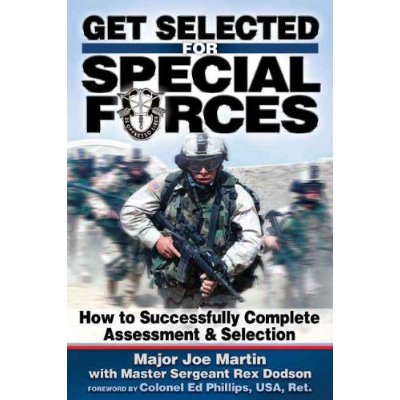
Finally: here is a post on strength coach.com along the same lines
http://www.strengthcoach.com/public/1282.cfm
Warrior + Paleo Diet
I started Warrior Diet a couple of years back & it took me from 30 – 20% body fat. Now I am 230 lbs and 20% fat I want to get down to 10 – 8%.
To do this I am combining Warrior and Paleo – as on just Warrior I was still wolfing down huge amounts of dairy like yoghurt & milk plus lots of potatoes.
Yoghurt & potatoes are probably two of the best weight gain foods when combined with a healthy diet.
Now I have cut them and all grains – my waist has immediately shrunk in just 9 days. I have lost a few KG too but that is not my goal.
My goal is to maintain at least 100 kg body weight but alter the composition to 10% or there about body fat. I don’t want to go below 8%.
I also don’t want to lose muscle mass so I will build up on Kettlebell Complexes and heavy basic deadlifts, squat & bench. I also am getting some whey.
All along I am doing my knee rehab also. Hopefully in 2-3 months my body will be ripped and my knees strong enough for hard core rucking again.
Prepare Your Knees for a life of hard training
I forget how long ago I got my weight vest. Guess it may be 18 months by now. I have done hundreds of miles in the thing since then.
I started training with 70 lbs recently for 3 hour hikes. Long weighted hikes bring out your strengths and weaknesses. Finally for me my knees have become an issue.
I began to get minor pain in my left knee some months ago, now both knees hurt immediately when I run. Its only very minor pain but it sends a nerve signal to my brain saying “stop”.
I can do every thing else without any knee pain EG: squats etc but if I don’t stop the vest training now & rehabilitate – I will never be able to do it in the future. I have already stopped running.
I think a three month intensive will not just rehabilitate my knees but make them strong enough to handle the training to come without inflammation or injury.
I have big heavy loads planned for weight vest training so I must fix this weak link now. It should vastly improve my running also.
Here its winter so 2-3 months off from hiking & running is fine with me.
The following are the products you need for world class knee strength…
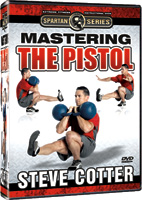
Steve Cotter is the man for Kettlebell training and his Pistol video is first class. Before you get into pistols though you need to prepare your knees.
The man for this is Mike Robertson who has several products concerning mobility & joint conditioning.

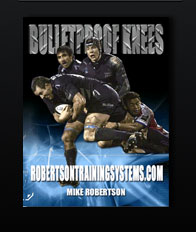

His product Bullet Proof Knees is made for the job – a world class product, others that support the knee program are magnificent mobility & single leg solution.
Finally there is the dude at elastic steel who is a flexibility & martial arts expert.
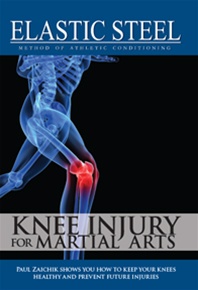
I know this is a must have too. So take a look at the above, five first class programs all of which will take your knee strength well beyond that of the average athlete.
Knee pain is often the factor that takes recruits out of military programs such as seals BUDs. I will spend the next 3 months working hard to get super knees. Then I will carefully begin rucking and weight vest training where I left it off.
Here are some links for the courses above:
http://www.fullkontact.com/training-dvds-pistol.html
http://www.magnificentmobility.com/
http://singlelegsolution.com/
http://www.bulletproofknees.com/index.htm
http://www.elasticsteel.net/Get_Rid_of_knee_pain_and_injury_to_your_knees_p/kneeinjury.htm
UPDATE:
You also want to check out “Secrets of the hip and knee”
http://functionalmovement.com/store/secrets_of_the_hip_and_knee
